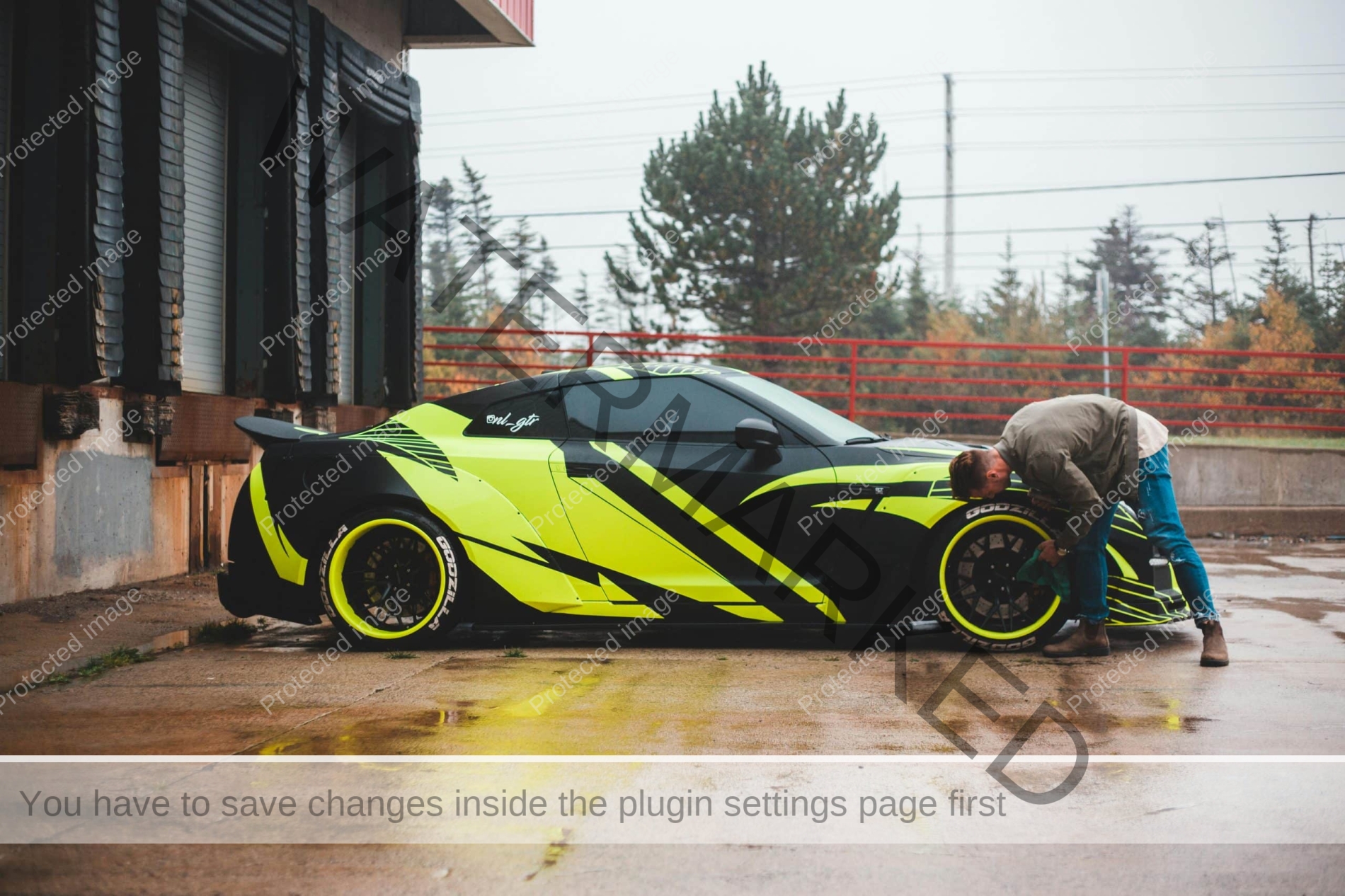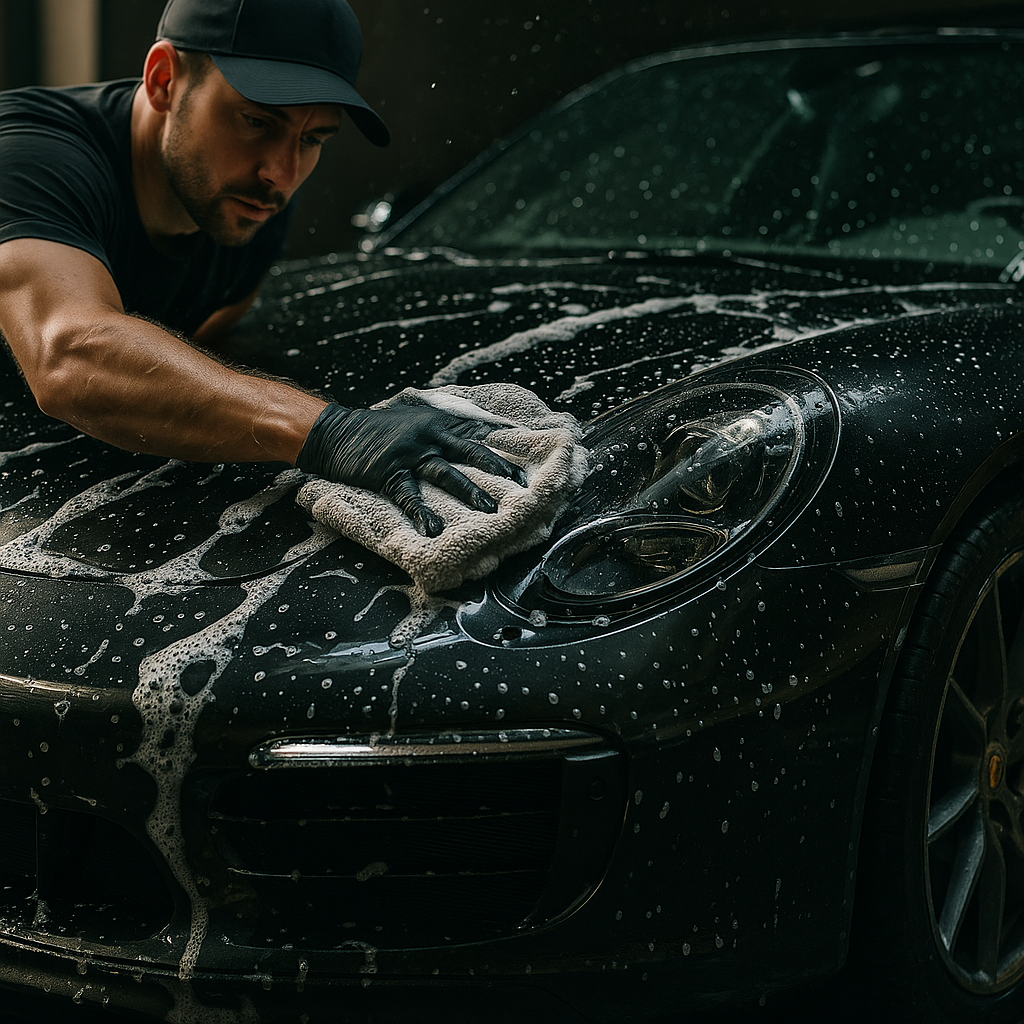If you’re a car enthusiast, you’ve probably thought about upgrading your vehicle’s appearance and performance. One of the most effective ways to do this is by installing an auto body kit. But what exactly are auto body kits, and why are they important? Let’s dive into the world of auto body kits and explore their types, benefits, installation process, and much more.
Auto body kits are aftermarket car modifications that enhance the aesthetic appeal and performance of a vehicle. They consist of various components like bumpers, side skirts, spoilers, and fenders, designed to alter the car’s exterior. Whether you’re looking to give your car a sleek, sporty look or improve its aerodynamic efficiency, an auto body kit can make a significant difference. These kits are not just about looks; they can also improve your vehicle’s handling, fuel efficiency, and overall performance.
Types of Auto Body Kits
Auto body kits come in various styles and materials, each offering unique benefits. Understanding the different types of kits can help you choose the one that best suits your needs and preferences.
Full Body Kits
Full body kits are the most comprehensive type of auto body kit, providing a complete overhaul of your vehicle’s exterior. They usually include front and rear bumpers, side skirts, and sometimes additional components like spoilers and fenders.
Fiberglass Kits
Fiberglass kits are popular due to their affordability and ease of customization. They are lightweight but can be prone to cracking if not properly maintained. Fiberglass is easy to mold, allowing manufacturers to create intricate designs and shapes. However, it requires careful handling and regular maintenance to prevent damage.
Polyurethane Kits
Polyurethane kits are more flexible and durable than fiberglass, making them a preferred choice for many. They can withstand minor impacts without sustaining significant damage. Polyurethane’s flexibility allows it to absorb shocks better, making it ideal for daily drivers who encounter various road conditions.
Carbon Fiber Kits
Carbon fiber kits are the pinnacle of performance and style. They are incredibly lightweight and strong, offering superior durability and a sleek, high-end look. Carbon fiber’s strength-to-weight ratio makes it a favorite among performance enthusiasts. However, these kits are often more expensive than other materials.
Lip Kits
Lip kits are less extensive than full body kits, focusing mainly on the front and rear bumpers. They add a subtle yet sporty touch to your vehicle, enhancing its aerodynamics without drastically altering its appearance. Lip kits are a great option for those who want to improve their car’s look and performance without making significant modifications.
Widebody Kits
Widebody kits are designed to give your car a more aggressive stance by widening its fenders and wheel arches. This not only improves the vehicle’s aesthetics but also allows for wider tires, enhancing grip and performance. Widebody kits are popular in racing and high-performance vehicles due to the improved handling they offer.
Components of Auto Body Kits
Auto body kits consist of several components, each playing a specific role in enhancing the vehicle’s appearance and performance. Here are the main components:
Front Bumpers
Front bumpers are crucial for defining the look of your car’s front end. They can drastically change the vehicle’s appearance and improve its aerodynamics. A well-designed front bumper can reduce air resistance and increase downforce, enhancing stability at high speeds.
Rear Bumpers
Rear bumpers, like their front counterparts, enhance the vehicle’s look and can also integrate features like diffusers for improved airflow. Rear bumpers help manage the airflow exiting the vehicle, reducing turbulence and drag.
Side Skirts
Side skirts help in managing airflow along the sides of the vehicle, reducing drag and adding to the car’s sporty look. They prevent air from flowing underneath the car, which can create lift and reduce stability.
Spoilers and Wings
Spoilers and wings are not just for show; they play a vital role in improving downforce and stability at high speeds. Spoilers disrupt the airflow to reduce lift, while wings create downforce, pressing the car onto the road for better traction.
Fenders and Flares
Fenders and flares protect the vehicle from debris and give it a wider, more aggressive stance. They allow for the installation of larger wheels and tires, improving grip and handling.
Benefits of Installing Auto Body Kits
Auto body kits offer several benefits, making them a popular choice among car enthusiasts.
Aesthetic Enhancements
One of the primary reasons people install auto body kits is to enhance the visual appeal of their cars. A well-chosen kit can transform an ordinary vehicle into a head-turner. The right body kit can give your car a unique look that reflects your personality and style.
Improved Aerodynamics
Auto body kits can improve your vehicle’s aerodynamics, reducing drag and increasing efficiency. This can lead to better fuel economy and performance. Aerodynamic enhancements can make your car more stable at high speeds and improve overall handling.
Enhanced Performance
Some kits, particularly widebody kits, allow for the installation of wider tires, which can improve grip and handling. This can be particularly beneficial for high-performance driving. Enhanced performance is not just about speed; it’s about better control and safety.
Choosing the Right Auto Body Kit
Selecting the right auto body kit involves several considerations to ensure you get the best results.
Material Considerations
The material of the kit is crucial. Fiberglass, polyurethane, and carbon fiber each have their pros and cons, so choose based on your needs and budget. Consider factors like durability, weight, and ease of installation when selecting the material.
Fitment and Compatibility
Ensure that the kit you choose is compatible with your vehicle’s make and model. Poor fitment can lead to installation issues and unsatisfactory results. Some kits are designed specifically for certain models, while others are more universal.
Budget Considerations
Auto body kits can range from affordable to very expensive. Set a budget and find a kit that offers the best value for your money. Remember that the initial cost is not the only expense; installation and maintenance should also be factored in.
Installation Process
Installing an auto body kit can be a rewarding project, but it’s essential to approach it with care and the right tools.
Professional Installation vs. DIY
While some enthusiasts prefer to install their kits themselves, professional installation ensures a perfect fit and finish. However, DIY can be rewarding and cost-effective if you have the skills and tools. Weigh the pros and cons of each option before deciding.
Tools and Equipment Needed
Basic tools like screwdrivers, wrenches, and drills are necessary for installation. More specialized tools may be required depending on the complexity of the kit. Having the right tools will make the installation process smoother and more efficient.
Step-by-Step Installation Guide
- Preparation: Clean the vehicle and gather all necessary tools and parts. Ensure you have a clean, well-lit workspace.
- Disassembly: Remove the stock bumpers, skirts, and other components. Keep all screws and clips organized.
- Test Fit: Place the new parts to ensure they fit properly. Make any necessary adjustments before final installation.
- Installation: Secure the new components using the provided hardware. Follow the manufacturer’s instructions carefully.
- Finishing Touches: Check for any gaps or misalignments and make adjustments as needed. Ensure all parts are securely fastened.
Maintenance and Care
Proper maintenance and care are essential to keep your auto body kit looking and performing its best.
Cleaning and Polishing
Regular cleaning and polishing keep your body kit looking fresh and new. Use appropriate cleaning products to avoid damaging the material. Avoid harsh chemicals and abrasive cloths that can scratch the surface.
Repairing Damages
Minor damages like scratches and chips can be repaired with touch-up paint or filler. For more significant damages, professional repair may be necessary. Addressing damages promptly can prevent them from worsening.
Regular Inspections
Periodically inspect your body kit for any signs of wear and tear. Addressing issues early can prevent more extensive damage. Regular inspections can also help you spot potential problems before they become serious.
Popular Brands and Manufacturers
Choosing a reputable brand ensures you get a high-quality auto body kit that meets your expectations.
Top Auto Body Kit Brands
Brands like Rocket Bunny, Liberty Walk, and Veilside are renowned for their high-quality kits and innovative designs. These brands offer a wide range of options to suit different vehicles and styles.
Recommendations for Different Vehicle Models
Different brands cater to various vehicle models. Do your research to find the best fit for your specific car. Look for reviews and customer feedback to get an idea of the quality and performance of different kits.
Customization Options
Customization allows you to create a truly unique look for your vehicle.
Paint and Finish Choices
Custom paint jobs and finishes can make your body kit truly unique. Options range from matte and gloss finishes to custom colors and patterns. Consider using a professional painter to achieve the best results.
Custom Decals and Graphics
Adding decals and graphics can further personalize your vehicle, reflecting your style and personality. Custom graphics can make your car stand out and showcase your creativity.
Legal Considerations
Modifying your vehicle’s appearance and performance comes with legal responsibilities.
Regulations and Compliance
Ensure your body kit complies with local regulations. Some modifications may be illegal or require special permits. Check with local authorities to ensure you’re in compliance with the law.
Insurance Implications
Inform your insurance provider about any modifications. This can affect your coverage and premiums. Failing to disclose modifications can result in denied claims or increased rates.
Common Mistakes to Avoid
Avoiding common mistakes can save you time, money, and frustration.
Poor Quality Kits
Investing in a cheap, poor-quality kit can lead to more problems than it’s worth. Always prioritize quality over cost. Look for kits from reputable manufacturers with positive reviews.
Incorrect Installation
Improper installation can result in misalignment, increased drag, and potential safety issues. Follow instructions carefully or hire a professional. Double-check all fastenings and adjustments to ensure everything is secure.
Neglecting Maintenance
Failing to maintain your body kit can lead to premature wear and unsightly damages. Regular upkeep is essential. Follow the manufacturer’s recommendations for cleaning and maintenance.
Cost and Value Analysis
Understanding the costs and long-term value of auto body kits can help you make an informed decision.
Cost of Different Types of Kits
The cost varies significantly based on the type and material of the kit. Fiberglass kits are typically the most affordable, while carbon fiber kits are the most expensive. Consider the initial cost, installation fees, and ongoing maintenance when budgeting.
Long-Term Value
A high-quality body kit can add value to your vehicle, especially if it enhances performance and aesthetics. Consider the long-term benefits when making your decision. A well-maintained body kit can increase your car’s resale value.
Real-Life Examples and Case Studies
Learning from real-life examples can provide valuable insights and inspiration.
Success Stories
Many car enthusiasts have transformed their vehicles with body kits, achieving impressive results in both looks and performance. Success stories often highlight the benefits of quality kits and professional installation.
Lessons Learned from Failures
Learn from others’ mistakes. Poor quality kits and incorrect installations are common pitfalls to avoid. Understanding common issues can help you make better choices.
Future Trends in Auto Body Kits
The world of auto body kits is constantly evolving, with new trends and technologies emerging.
Innovations in Materials
New materials like advanced composites are being developed, offering better performance and durability. Innovations in materials can lead to lighter, stronger, and more versatile body kits.
Advancements in Design
Design trends are constantly evolving, with more aerodynamic and aggressive styles becoming popular. Future body kits may incorporate smart materials and adaptive designs that enhance performance and efficiency.
Conclusion
Auto body kits are a fantastic way to enhance the look and performance of your vehicle. Whether you opt for a full body kit or a simple lip kit, the key is to choose high-quality materials and ensure proper installation. Regular maintenance will keep your kit looking great for years to come.
FAQs: Everything You Need to Know About Auto Body Kits
What is the difference between full body kits and lip kits?
Full body kits provide a comprehensive overhaul of the vehicle’s exterior, while lip kits focus mainly on the bumpers for a subtle enhancement.
How do I choose the right material for my auto body kit?
Consider factors like durability, flexibility, and budget. Fiberglass is affordable, polyurethane is durable, and carbon fiber is lightweight and strong.
Can I install an auto body kit by myself?
Yes, but it requires the right tools and skills. Professional installation is recommended for the best results.
Are auto body kits legal everywhere?
Regulations vary by location. Check local laws to ensure compliance before installing a body kit.
How often should I maintain my auto body kit?
Regular cleaning and inspections are recommended. Address any damages promptly to prevent further issues.




3 thoughts on “Transform Your Ride with Auto Body Kits: A Comprehensive Guide”
I don’t think the title of your article matches the content lol. Just kidding, mainly because I had some doubts after reading the article.
Your article helped me a lot, is there any more related content? Thanks! https://accounts.binance.com/pt-PT/register?ref=DB40ITMB
Thank you, your article surprised me, there is such an excellent point of view. Thank you for sharing, I learned a lot.